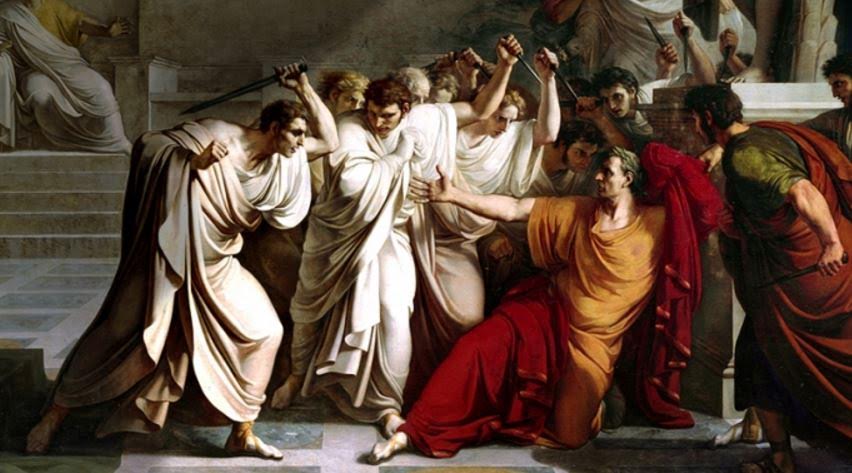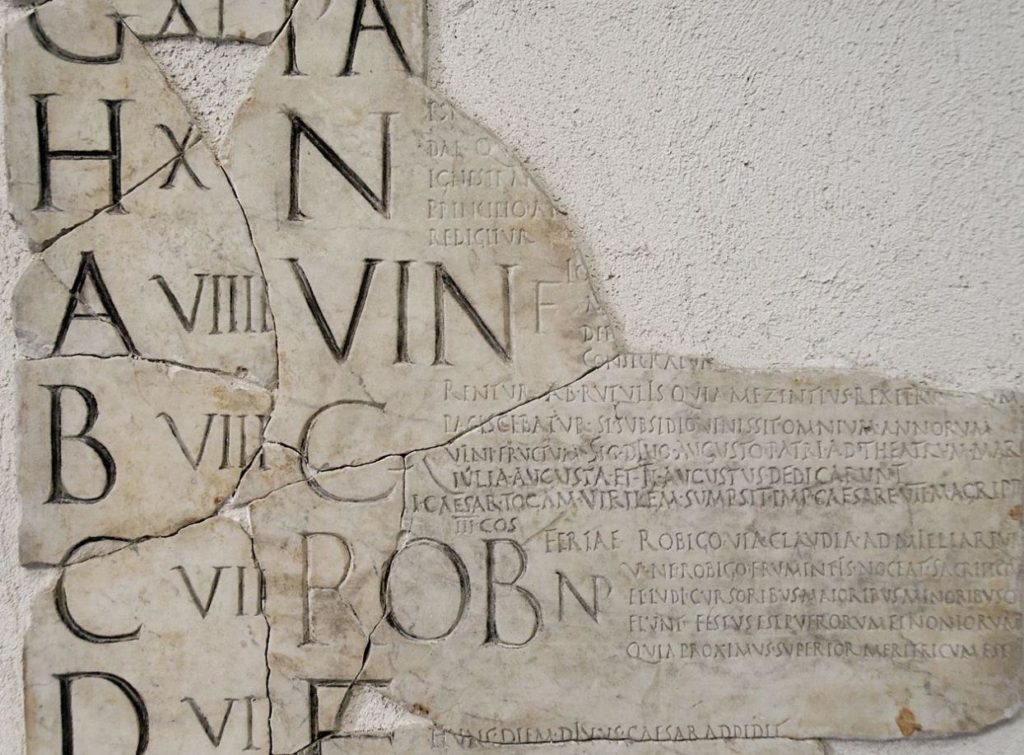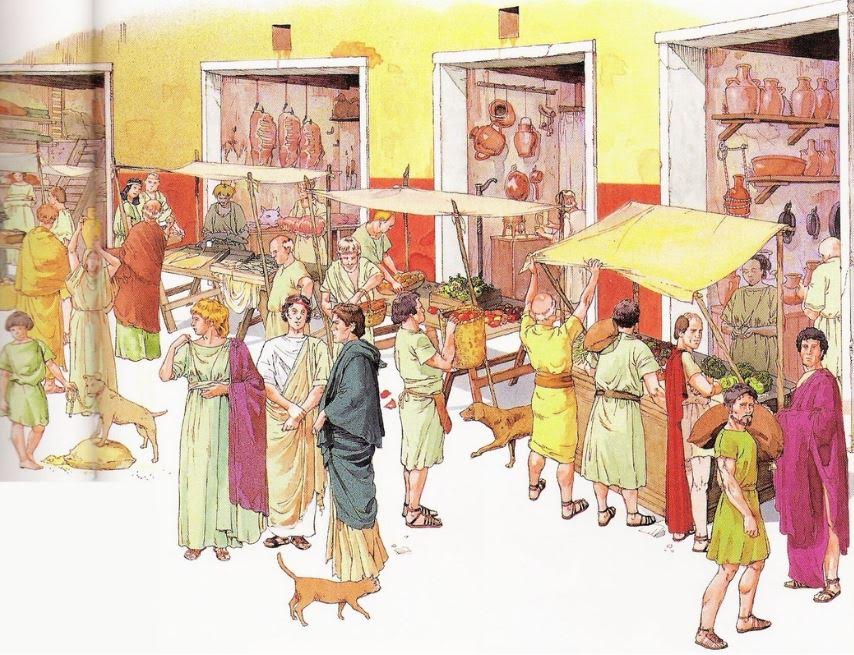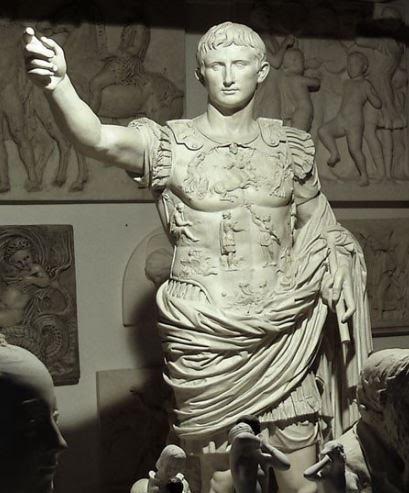
Salve readers!
We’re back in the Roman world for the third part in this mini Ancient Everyday blog series about, you guessed it: Time.
Today, we’re going to take a brief look at the Roman days and weeks which, in addition to many things, are one of their legacies to us.

Portion of a Roman Calendar showing the Kalends, Nones, Ides, and some festivals etc.
The Roman days of the month were not numbered serially as they are today. They were numbered in relation to three specifically named days. It was from these three specific days that the other dates were counted retrospectively.
So, what were these special days, you might ask? They were the:
Kalendae
(the Kalends – first day of the month, and origin of our word ‘calendar’)
Nonae
(the Nones – the ninth day before the Ides, or the fifth day of the month; seventh in a 31-day month; originally, the Nonae corresponded with the first quarter moon of the lunar month)
and
Idus
(the Ides – the thirteenth day; or the fifteenth day in a 31-day month; the Ides originally corresponded with the full moon of the lunar month)

The Ides of March – the date of Caesar’s assassination
So, those are the ‘special’ days in the Roman month. But how did they count the rest?
This is where it gets complicated…
The day was numbered or named by its place so many days before (ante diem) the Kalends, the Nones, or the Ides of the month.
But! The day immediately before one of the three named days was called pridie.
If you ever try to read Roman dates, you will also notice that they are always abbreviated.

Fragment of the Fasti Praenestini for the month of Aprilis (Wikimedia Commons)
In ancient Rome, the official Calendar was drawn up by the pontiffs (priests) who ensured the inclusion of the dates for religious festivals – and in ancient Rome, there were many of those! These festivals would be indicated by a letter or abbreviation representing a particular celebration beside the date.
So, those are the days of the Roman calendar, but what of the weeks? Did they have the exact same weekdays that we do? Or rather, do we have the same ones as the Romans?
Not exactly.

A Roman market day
Early on, the Roman week was eight days long. The eighth day was a market day, or nundinae.
The market day was a day of rest from agricultural labour, a time to take the produce or livestock to market.
To confuse things a little more, the period of time between market days was known as a nundinum.
The eight-day week did not last however.
The seven day period that we are familiar with was used at first in the East, especially by Hellenistic astrologers.
In Rome, the earliest reference to a seven day week is supposedly from the time of Augustus (27 B.C. – A.D. 14). This was eventually officially adopted by Emperor Constantine in A.D. 321.

Emperor Augusts
Finally, what were the names of the days of the week in ancient Rome?
Well, they were named after the gods and planets, and to this day the names used in the various Romance Languages preserve the Roman tradition. Beginning with Monday, they are:
Dies Lunae (the day of the Moon)
Dies Martis (the day of Mars)
Dies Mercurii (the day of Mercury)
Dies Jovis (the day of Jupiter)
Dies Veneris (the day of Venus)
Dies Saturni (the day of Saturn)
Dies Solis (the day of the Sun)

There you have it, the Roman days and weeks!
The legacy of the Romans never ceases to amaze me.
Next week is the fourth and final part of this Ancient Everyday blog series in which we will be looking at how the Romans told the time of day.
Until then, thank you for reading!



